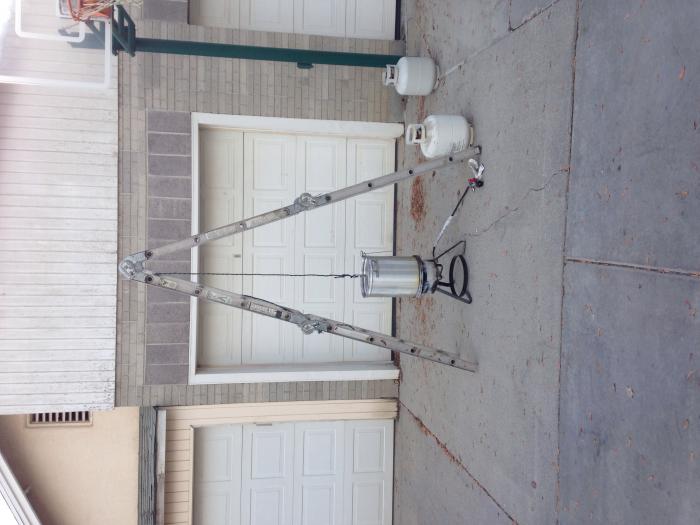augiedoggy
Well-Known Member
I made one of these and used instructional videos on youtube... it was a bit confusing but it works well.

I was looking at this product again. It definitely says heat AND cool...
Honestly, just go with the STC-1000. It's tried and true and used by many people. Celsius shouldn't be a problem. I just made a small conversion chart that I keep right by it.
Does the type of extension cord matter?










The inline fuse is added as an extra protection for the STC unit. If there is too much current being drawn from the outlets, the inline fuse will blow, cutting power to the STC. If that fuse wasn't there, there is a potential for the temp controller to overheat and melt. I have heard the STC may have its own fuse, but hey, why not be extra careful. It's an extra dollar or two.
With regard to the fuse, I picked up a fuse holder with fuse, as described in the BYO article. However, what I'm not sure about is what kind of fuse to use. I believe the article says to use a 10A fuse. I picked up two different kinds - time delay and fast acting. Which one is more appropriate here?
Thanks for your help!!
I figured out something weird tonight. When I aquired my freezer, it worked just fine when plugged in. But when I ram it through the controller, the plug stopped working. So I ran an extension cord over from another plug and have been running it that way all winter.
The thought occurred to my slow brain that it's a GFI plug that tripped. So I reset it and tries to plug the controller back in.
It resets but every time I plug in the controller, it trips. It's not even pulling any current for the cold or hot circuit when it trips.
So I plugged it back into the extension cord and it's running fine again.
Could it just be a bad GFI plug?
Nice! That's exactly how I set mine up. Basically, you should be fine either way, but I would just go with a fast acting fuse.
Basically, a fast acting fuse blows immediately once current exceeds the rating. A time delay fuse will give you a little time before the fuse blows. This is normally used in an application where an appliance will use a sudden, large burst of electricity when starting up and then ramps down. That initial burst may exceed the rating and the slow blow fuse will give it a little leeway. Many fridges and freezers actually perform this way, but I don't think you will be approaching the current limits of a fuse with one.
A 10 amp fuse used in the US, will be good for an appliance up to 1200 watts. Basically, voltage x current (amps) = watts. In the US, we have 120 volt. So, 120 volts x 10 amps = 1200 watts.
I'd rather lose a fuse that costs <$1 than have my STC unit blow due to a slow blow fuse.
However, either way, you'll probably be fine. You just have to be more mindful if you are using an appliance that draws a lot of power, like a heater. A space heater may draw up to 1500 watts.
thanks for the advice. i'm definitely going to go the fast acting fuse route.
however, my local home depot did not have (or the worker bee i talked to could not find) a panel mount fuse holder. but they did have an inline fuse holder (link here: http://www.homedepot.com/p/Unbrande...r-12-BP-HMK-RP/203298931?N=5yc1vZbtvmZ1z10wqj) will this work just as well? i picked up some 10A fuses that i will use instead of the included 20A (or 30A) fuses that came with it.
any issues with this method? otherwise, i guess i can order a panel mount one from china (any other big box stores carry the panel mount variety?).
thanks!!!

Since the controller is hand wired, I suspect you have something miss-wired. Don't know why it would only trip certain GFCIs.Between valentines, picking up a bed from my brother, attending a funeral, and prepping a room for painting, I managed to try plugging the controller into an extension cord and into Garage II. It still trips the GFCI.
So here's what I know:
1. The only thing that trips the GFCI in Garage II is the controller.
2. The only place the controller trips a GFCI is in Garage II.
There must be something faulty with one of them. I'll check the controller first because it's free. But it may not be until Monday.
2 GFCIs? It should only be plugged in to one. Having two in line can cause them to trip easier. At least that's been my experience.
2 GFCIs?
It should only be plugged in to one. Having two in line can cause them to trip easier. At least that's been my experience.



"Earth" or ground should NOT be connected to the same terminal on the receptacle(s) as the neutral. "Earth" should ONLY be connected to the ground (green) terminal on the receptacle(s).....So it wired:
Hot block goes to: main plug, 1, 5, 7
Neutral block goes to: 2, cold2, hot2
Earth block goes to: main plug, cold2, hot2
6 goes to: hot1
8 goes to: cold1
cold1 and cold2 are opposite sides of the cold plug
hot1 and hot2 are opposite sides of the hot plug
.....
